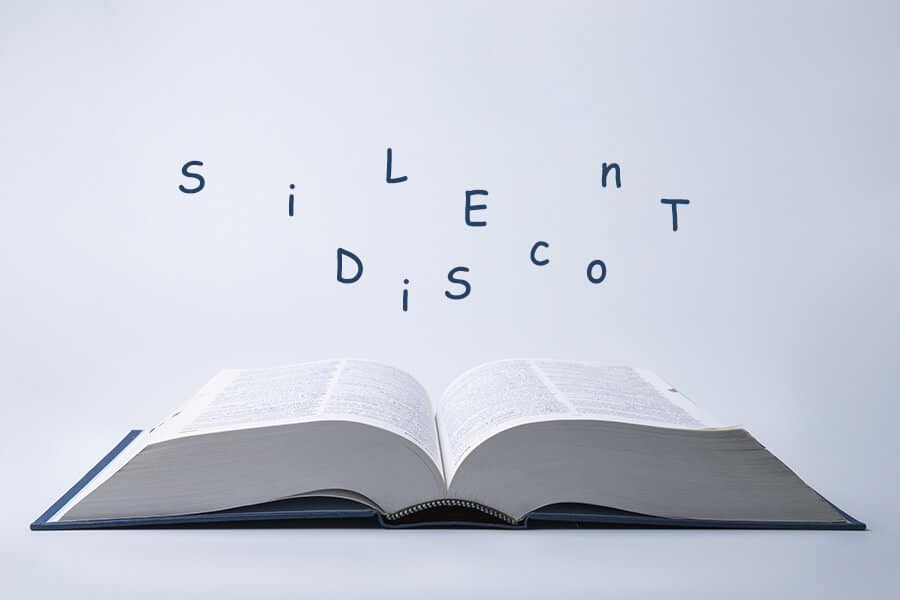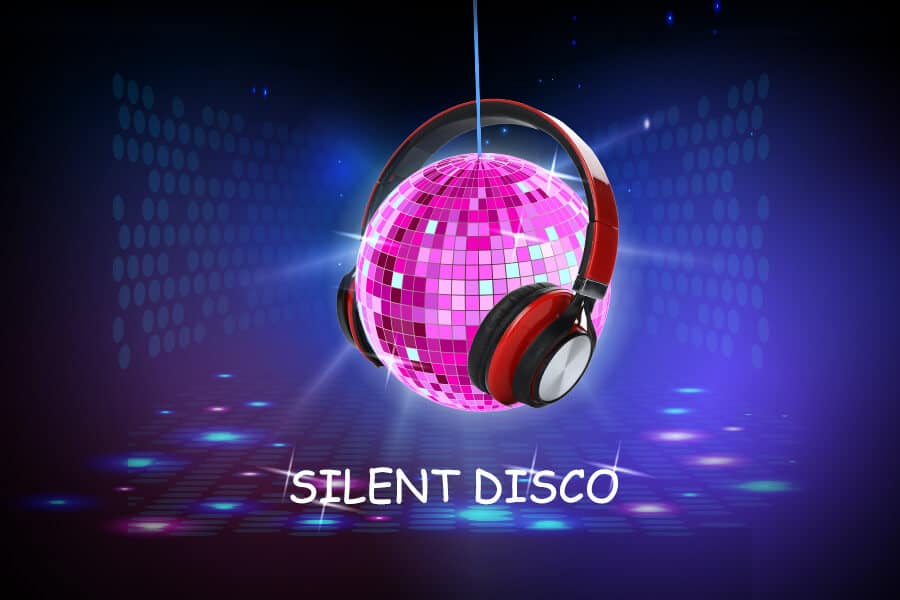Who thought there would come a day when introverts would finally to look forward to going to parties? Except that these are not the usual types of parties you go to. This time, you use headphones and you dance to your own rhythm and pace. You haven’t heard about silent disco raves before? It’s about time you did!
A silent disco – or also called a silent rave – seems to be the most millennial thing ever. These are events in which folks dance to music which they listen to through wireless headphones. Yes, you read that right. They do not use a speaker system, but instead, they listen to music broadcast through a radio transmitter, which releases a signal towards the participants’ wireless headphones. What does this mean?
It means that if you’re the one without the headphones, you won’t be hearing any music, and you will be left staring at people dancing on their own, or catching the same rhythm while their surroundings are silent.
It All Started with Noise Pollution

Have you ever heard of Friedrich Nietzsche quote, “And those who were seen dancing were thought to be insane by those who could not hear the music”? This quote would fit the scenario. But how did these parties start becoming popular, and who thought to throw parties like this anyway? Turns out that the concept of partying this way goes way back into the ‘90s, when eco-activists used their headphones to party outdoors without causing noise pollution or disturbing the local wildlife. Later on, in May of 2000, BBC Live Music held what they called a “silent gig” at the Chapter Arts Centre in Cardiff. It was a very popular event where the audience listened to a band, Rocketgoldstar, and various other DJs through their individual headphones.
This peculiar trend in partying continued further, with a milestone noted in May of 2002, when artist Meg Duguid hosted a silent dance party called “Dance with me” at the Museum of Contemporary Art in Chicago, and later on when she threw a second dance party at the Museum of Contemporary Art the following year. The party was called “Dueling DJs” because of the fact that two DJs simultaneously spun two separate musical transmissions through wireless headsets to two diverse audiences. Another performance was organised in 2004, and similar performances continued happening throughout the years, although they’re at the peak of their popularity today.
The pioneers of silent discos seem to have been the famous Dutch DJs Michael Minton and Nico Okkerse. According to the National, these two were the ones who started the whole concept of ‘stille disco’ or ‘silent disco’ in 2002.
But who knew that this sort of partying would become so popular, so that it would even start becoming a “thing” in festivals?
Silent Disco is in the Oxford Dictionary

In 2005, after many complaints from residents surrounding the villages where the Glastonbury Festival took place, Glastonbury really embraced the concept of silent discos. The local council threatened to shorten the hours of the Festival’s parties, and it imposed noise restrictions which didn’t make the Festival fail, as adapting the concept of silent parties turned out to be a major success. YouTube currently has countless videos of silent party animals, feeling the groove at their own pace. This helped the whole idea of silent partying become famous world-wide. But it was only in 2011 that the Oxford Dictionary Online added the term “silent disco” to its website.
Ever since, ways of throwing similar parties have evolved, and interest has increased. That’s why there have been increasing numbers of companies that organize such parties and provide events with wireless headphones.
Another form of manifesting silent parties is through mobile clubbing. This concept gathers people and allows them to dance to music which they receive through portable music devices, such as MP3 Players or similar, while listening to their music of choice through headphones.
Mobile silent parties may manage to gather numerous people, and turn public spaces into clubbing locations at a whole new level. And of course, these events are usually organised through social networking sites such as Facebook, Instagram, or other communication platforms.
Why So Much Popularity?
We have mentioned that these parties have been going on for ages, but why is their popularity rising at an accelerated pace? This may be happening for multiple reasons. It may be because the younger generation is getting fed up with loud parties, or because they want to get involved in personalized experiences by having the opportunity to experience fully the music they’re listening to. The beautiful thing about these parties is that you may choose to experience the music you like on your own, or share the channels with your friends and meet up with the same pace of dancing.
And you don’t even have to listen to the same song all the way to the end. Guilty as charged, I have to admit that I can only make it through 60 % of most songs. And you don’t have to be counting on the DJ to play your favourite songs. Tune in with the playlist you have created for yourself, and dance to whatever sort of beat you like.

What people who have been in these parties tell us is that you can enjoy the music and the party, but you can also take off your headphones every once in a while and simply look at the crowd having a blast. The sponsors guarantee it is a very heart-warming, emotional realization to see people enjoy themselves alone, but together at the same time!
Introverts, your time has come!
Photo: Shutterstock / Photomontage: Martina Advaney
Read more on music from Youth Time Magazine:
Support us!
All your donations will be used to pay the magazine’s journalists and to support the ongoing costs of maintaining the site.
Share this post
Interested in co-operating with us?
We are open to co-operation from writers and businesses alike. You can reach us on our email at [email protected]/[email protected] and we will get back to you as quick as we can.









